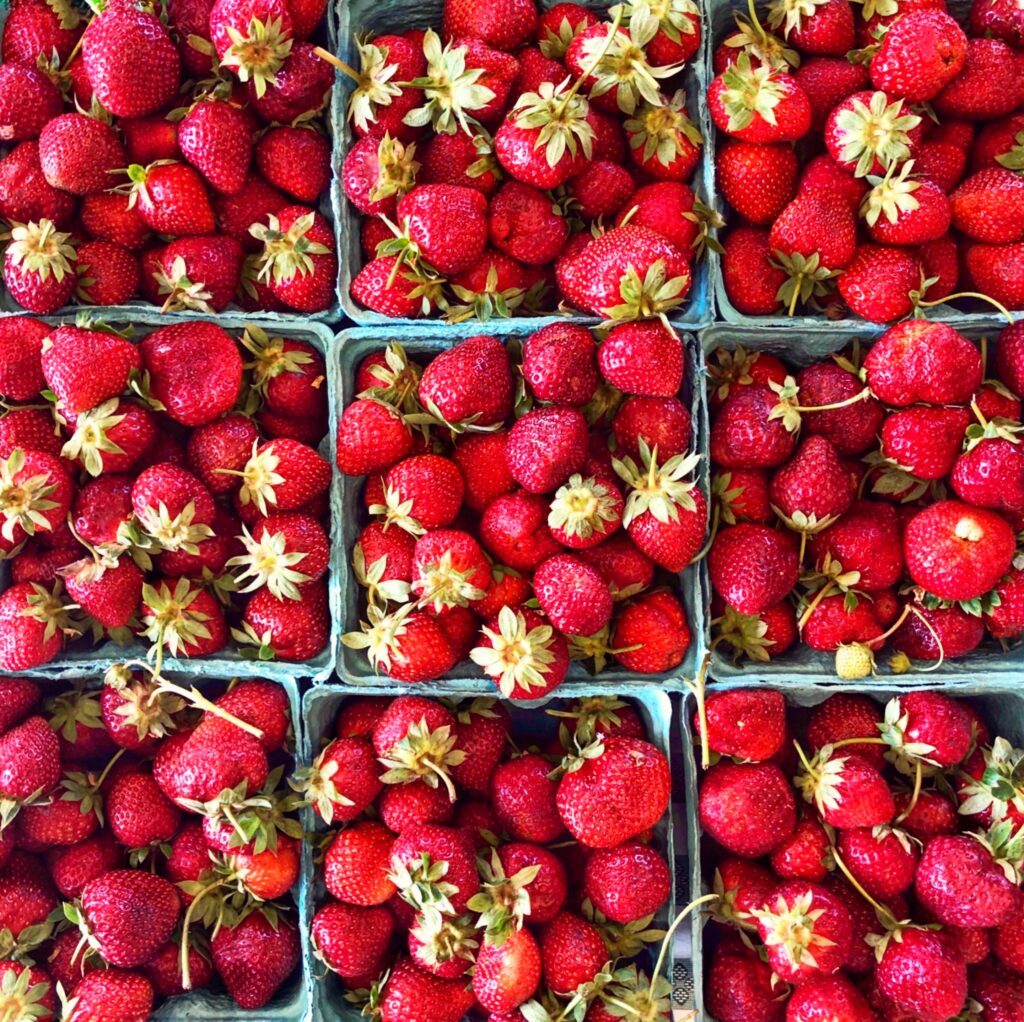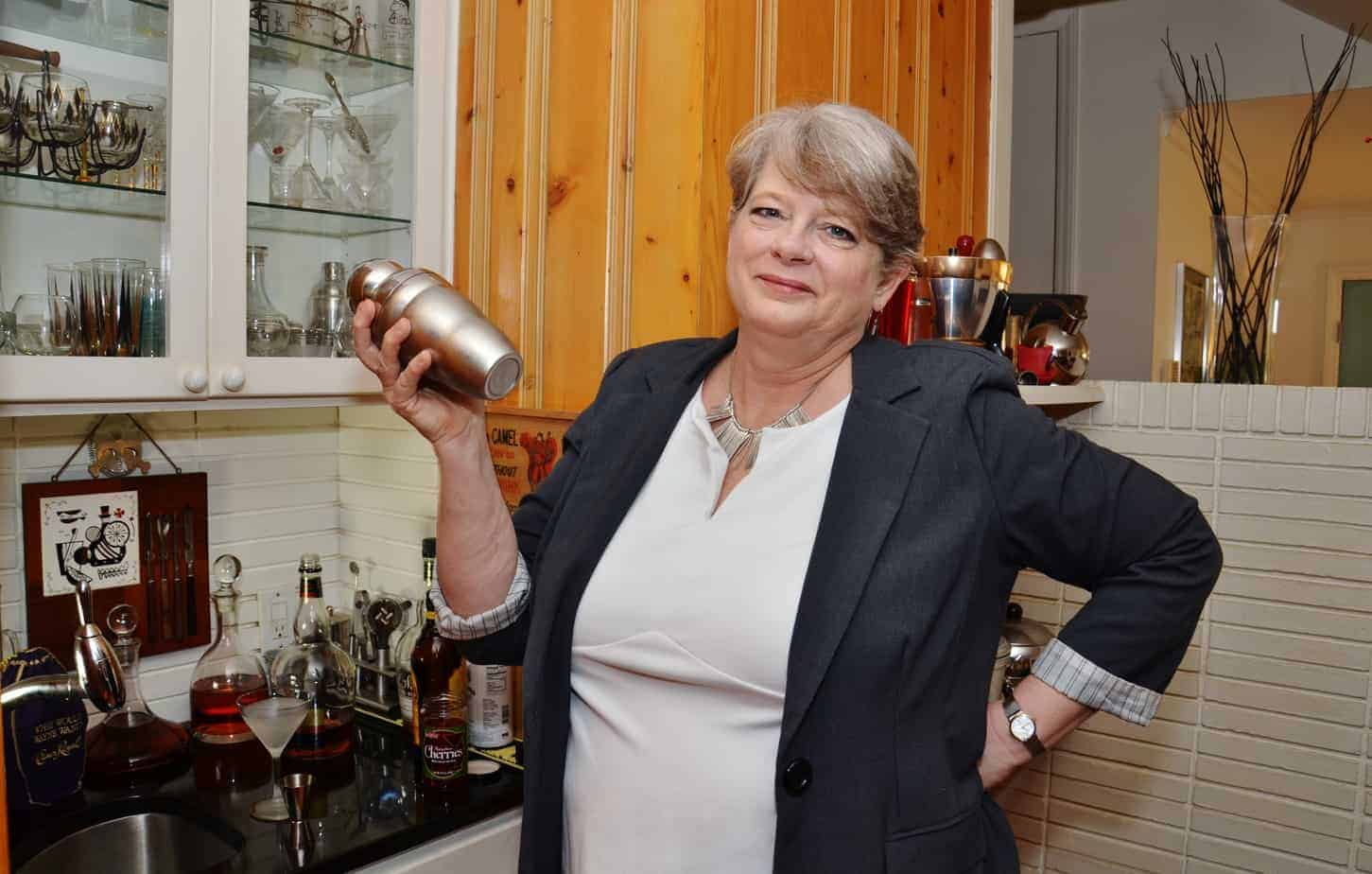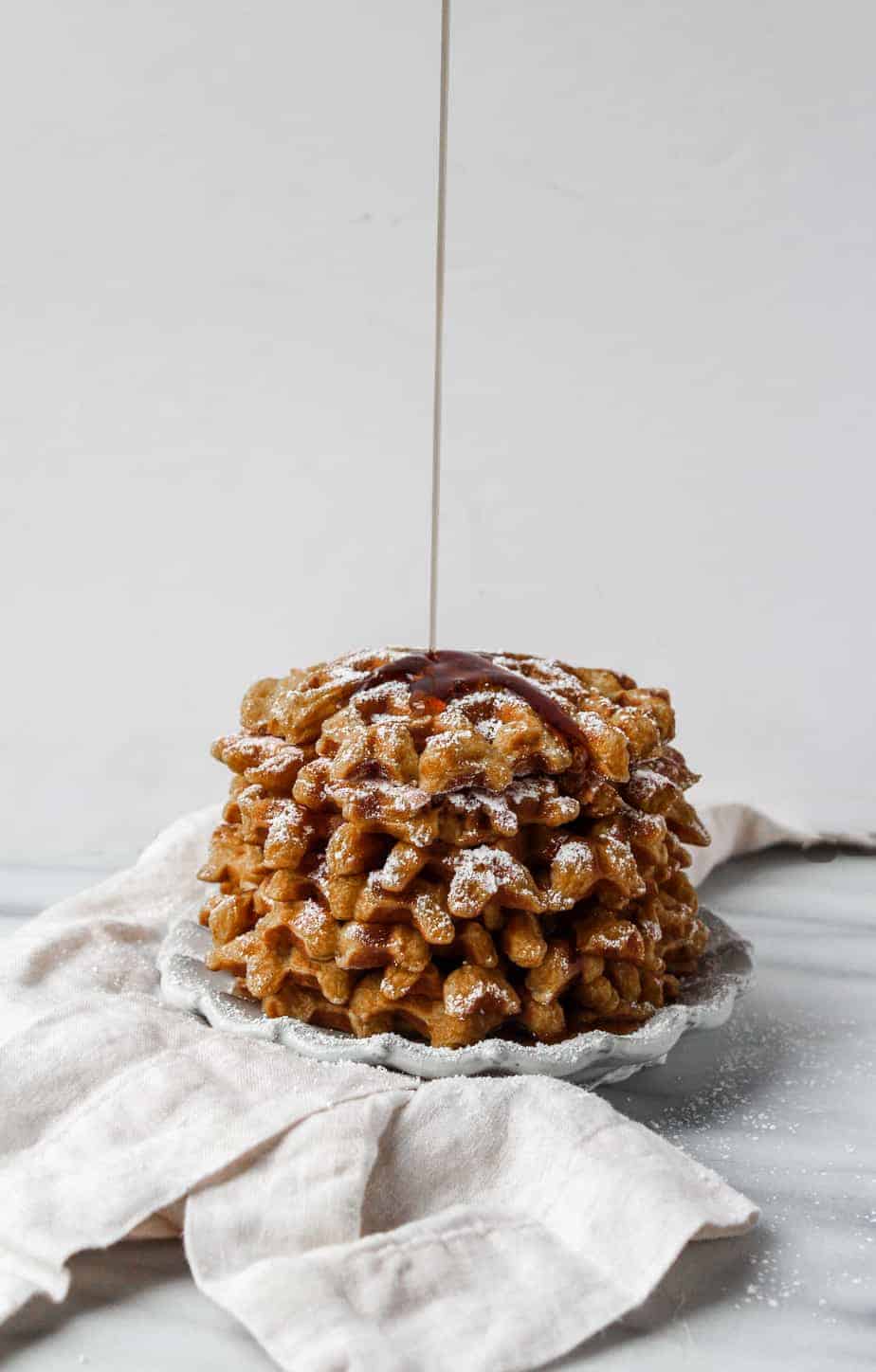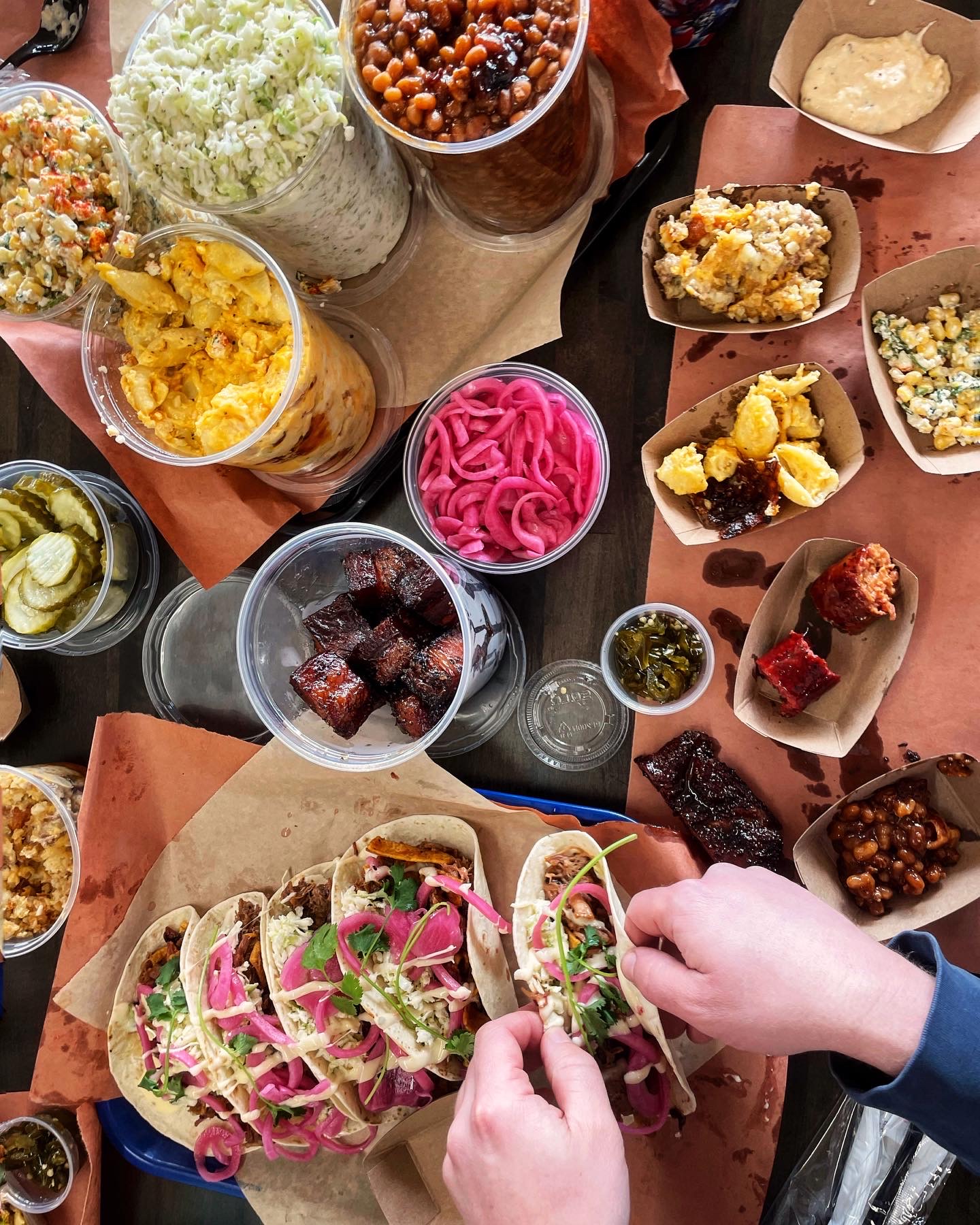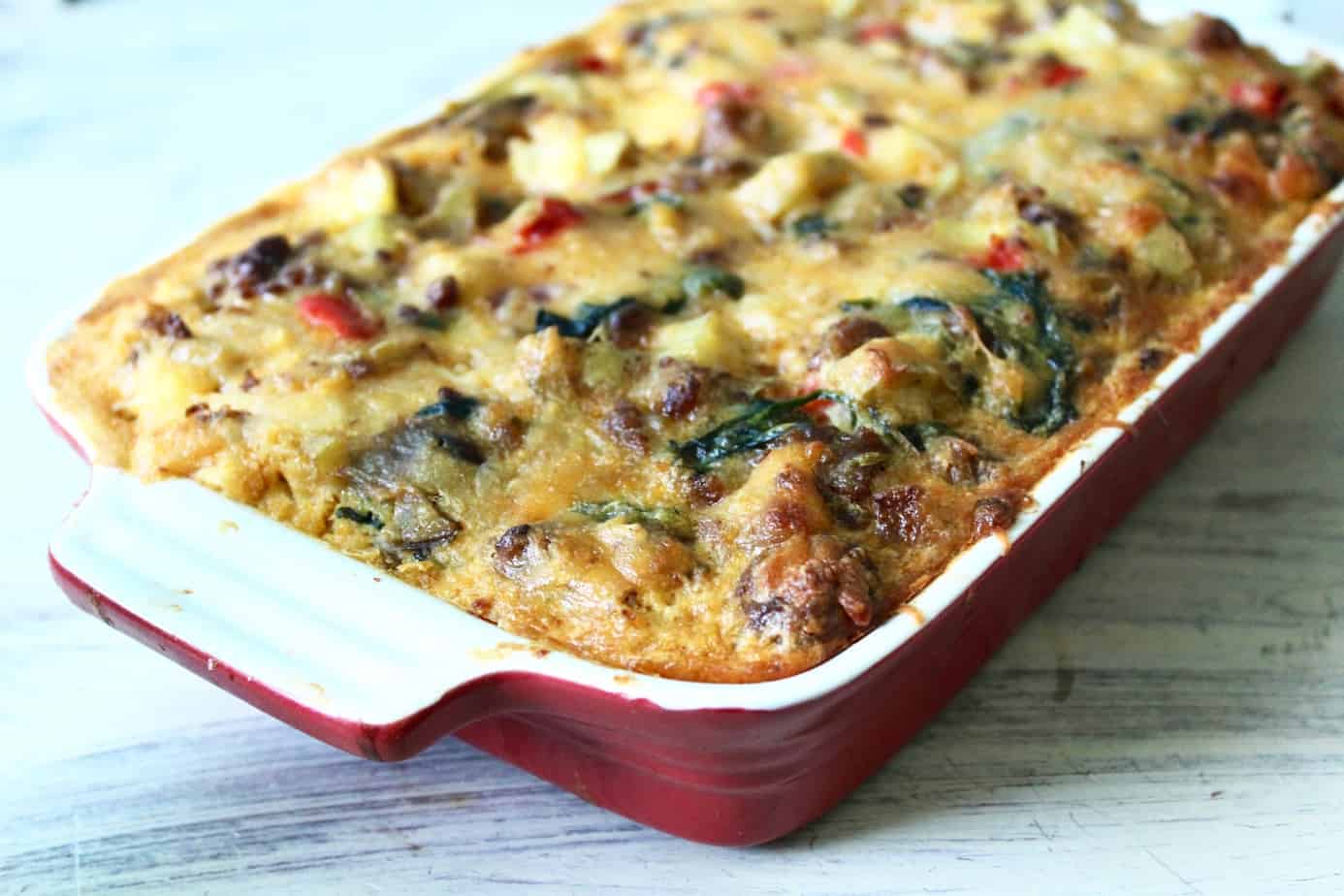the ultimate guide to the charlotte regional farmers market
I’m breaking down everything you need to know about the Charlotte Regional Farmers Market —what to expect, when to go, what to buy and some of our favorite vendors. A Saturday morning spent at the Charlotte Regional Farmers market is an easy, fun way for food lovers to shop fresh and support local.
The ultimate guide to the Charlotte Regional Farmers’ Market
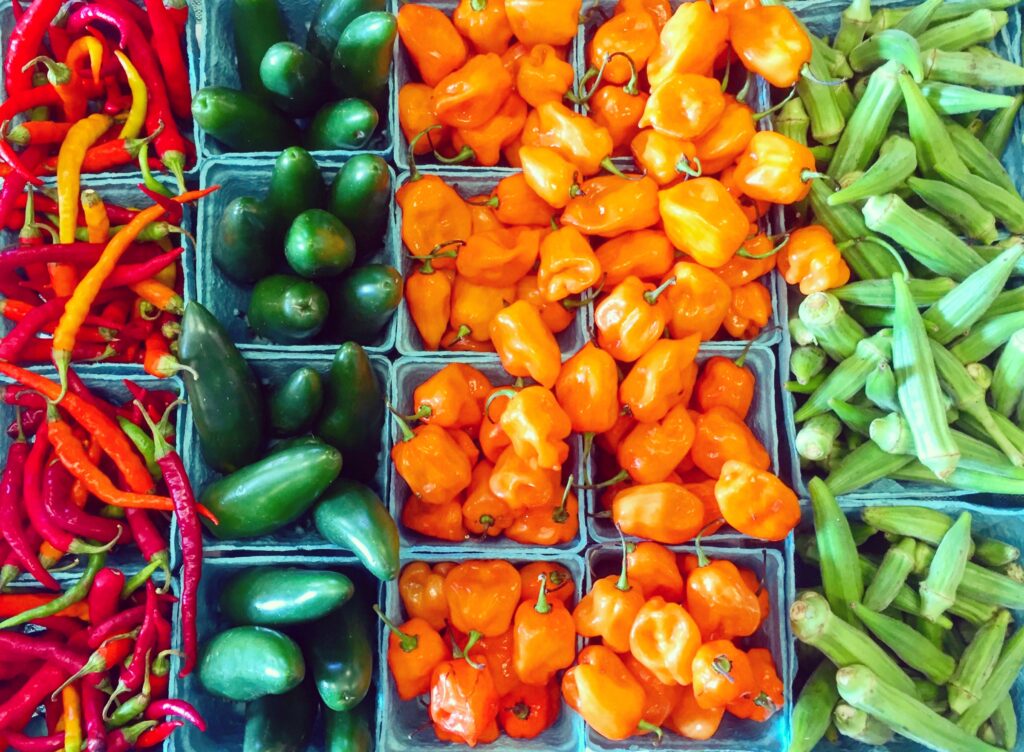
The Charlotte Regional Farmers Market is one of my favorite places to have a slow morning, or a meander if you will. Winding my way through the buildings among local produce, flowers, plants, local meat and seafood, with a coffee in hand (and now a stroller in tow: pro tip, underneath the stroller is the perfect storage space for all of your farmers market finds) is one of my happy places.
Do all of these Saturdays spent shopping the stalls at the Charlotte Regional Farmers Market make me an expert?
I mean, I am not sure what qualifications you need to be a farmers market expert (and now I’d like to consider a career change) but I can confidently say I’ve learned a thing or two (or three or four or five) that I’d like to share with you.
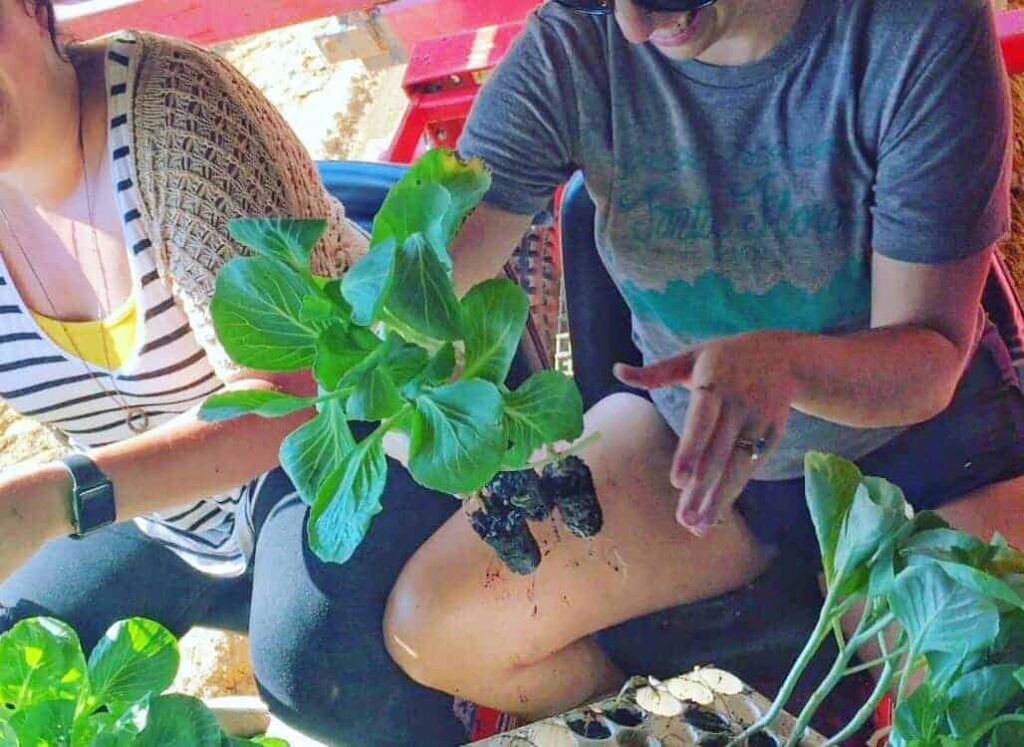
(If you’re looking for recipes I’ve made featuring fresh, local ingredients and products, I have those. Check out this sheet pan chicken, poached chicken, peach whiskey smash recipe, watermelon frozen rose, blackberry basil gin fizz, and grilled peach sundaes!)
I remember when I first moved to Charlotte, the farmers market seemed like a total mystery, so my goal with this post is to share my insights and experience doing our weekly shopping at the Charlotte Regional Farmers Market.
I hope by sharing our experience and preferences (everyone is different) will not only give you the 411 on the market and answer your burning questions, but to also make the market appear less daunting and more approachable/navigable/easy to tackle for readers who are not as familiar with the market.
If I don’t specifically answer your question in this post, please leave a comment and I will make sure to answer it below!
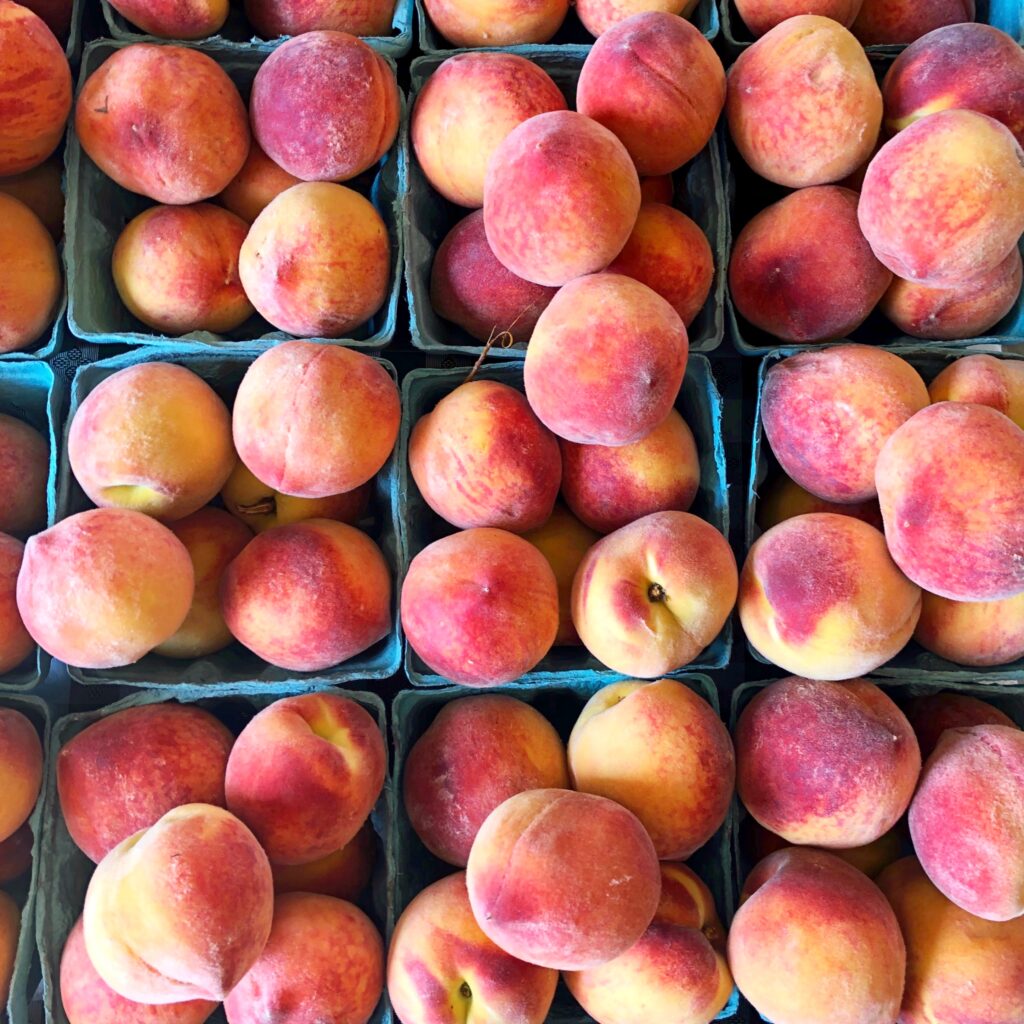
About the Charlotte Regional Farmers Market
Address: 1801 Yorkmont Road, Charlotte, North Carolina, 28217
The Charlotte Regional Farmers Market is one of the largest farmers markets in North Carolina and the biggest one in the Charlotte area. Tucked just off Yorkmont Road near the airport, it’s a mix of indoor and outdoor sheds full of local farmers, bakers, flower growers, soap makers, and more.
It’s run by the NC Department of Agriculture, which means it’s not just a pop-up market; it’s a year-round, rain-or-shine kind of place. You’ll find everything from just-picked produce and locally raised meats to honey, eggs, hot sauces and even a spot that will sharpen your knives while you shop!
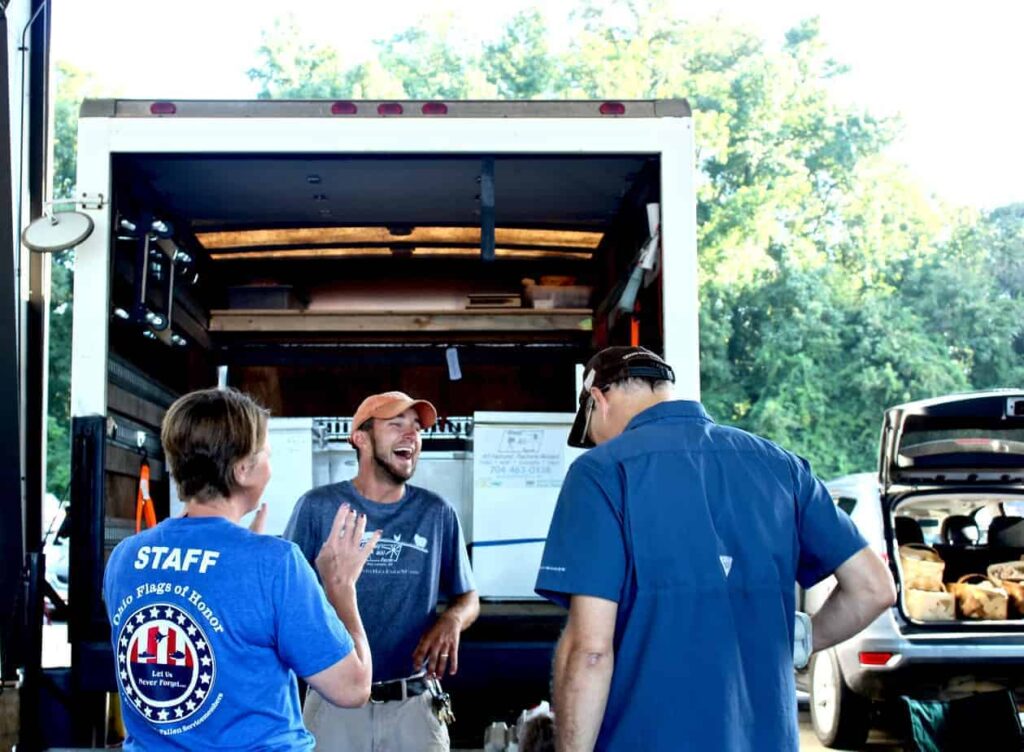
When to visit
The Charlotte Regional Farmers Market It is open all year round (yes! you can do farmers market shopping all year round and it’s something we totally do…of course, offerings in the winter are more sparse but still exist and are delish.)
The days and hours vary depending on the season. During the peak season (May through September), it is open Tuesday through Saturday 8AM-6PM and Sunday 12PM to 6PM.
Saturday is the day to hit it up though…that is when all of the buildings will be open and you will have the most vendors and farmers available (and especially if you’re looking to purchase from local farmers, Saturday is the day to go because that’s usually the only day they are there.)
If you go on one of the other days, you’ll usually just find some vendors in Building B that are open (we’ll talk more about the building breakdown below.)
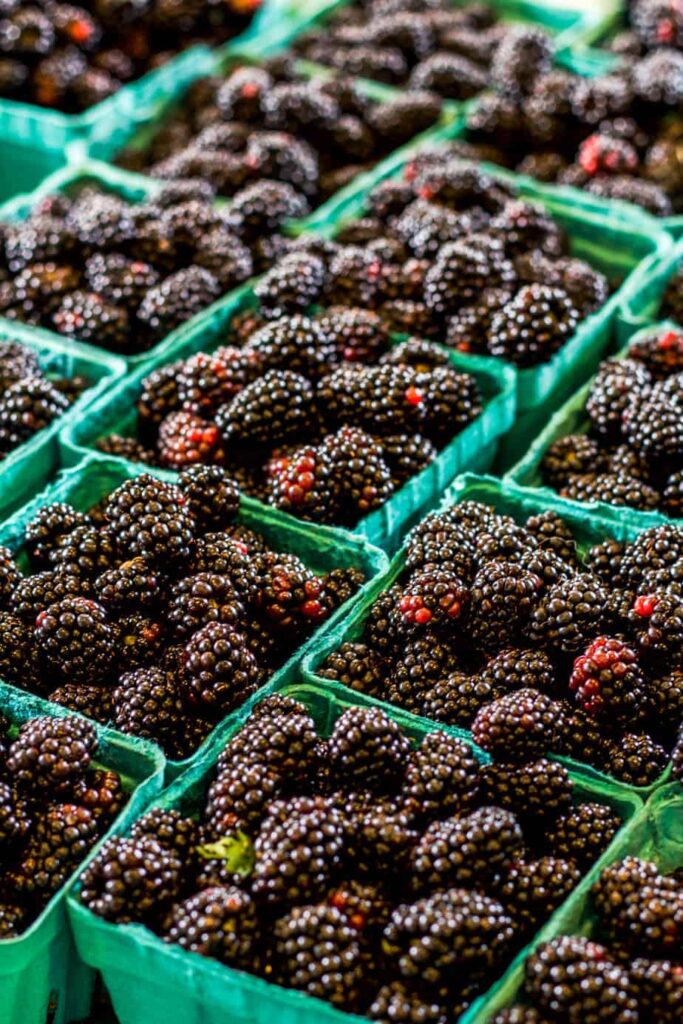
In the fall/winter/early spring season (October to April) the market is open 8AM-5PM.
A lot of farmers and vendors will sell out of their products, so my biggest tip is to get there early so you can get the pick of what they’ve brought and not just what’s left.
We usually try to get to the market between 830 and 9am on Saturdays.
How to navigate the Farmers Market
The Charlotte Regional Farmers Market is one of four regional markets owned by the State of North Carolina and operated by the North Carolina Department of Agriculture and Consumer Services.
Those owned and operated by the state are strategically located across North Carolina (there is on in Raleigh, one in Greensboro, one in Asheville and one in Charlotte) to serve both large and small farmers.
The Charlotte Regional Farmers Market is a behemoth of a space made up of four big buildings or sheds, plus a concession area. It’s size can make it intimidating for first timers or people unfamiliar with the set up and space.
Here’s a breakdown of what you can find in each building. (I’ve also included a map below to help you visualize the layout!)
Building A is the farthest building to the right when you are driving in. Building A is the “Got to be NC Building,” which means that everyone selling in that building are North Carolina farmers selling only North Carolina products.
You’ll find not only North Carolina farmers selling local produce, but also eggs, meat, dairy, honey, and beautiful fresh cut flowers.
Building B is the middle building, slightly to the left when you drive onto the property. Building B is home to the “Market Shoppes,” which are several locally owned “Mom and Pop shops” who are allowed to sell produce and other agricultural goods from around the United States and around the world.
When speaking with manager Amie Newsome, about retailers who sell produce or other goods that are not necessarily “local” (you’ll find things like bananas, pineapples and other produce that is not available year round here in North Carolina), she says they offer this option “to create a family friendly market where no matter where your family is from, you can find what you grew up with [or what is familiar to you] at your local market. We have vendors who provide local, regional, national and global produce to meet demands of our diverse clientele.”
In Building B, you’ll also still find some local farmers selling local produce and goods, plus local vendors selling baked goods, specialty products, muscadine wine, as well as a Dunx Coffee stand to help fuel your shopping.
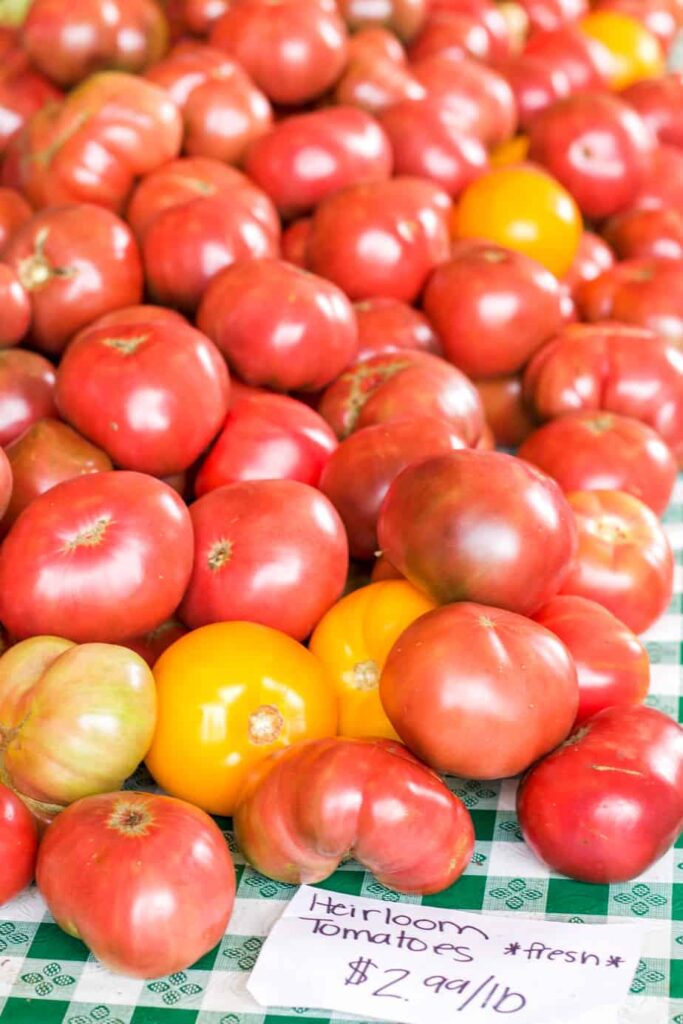
Building C is the farthest building to the left when you’re driving in and is home to the Variety Shops.
In Building C, you’ll find what you expect from the name, a variety…including North and South Carolina farmers selling produce, meat and dairy, seafood, prepared foods, specialty foods, baked goods, crafters, goat milk soap and more.
The fourth building, in the left front corner as you drive in is the Greenery Shed, mainly home to certified nurseries selling trees, shrubs, bedding plants, perennials and other plants. In the Greenery Shed you’ll also find a few crafters who utilize North Carolina agricultural products in their unique handmade crafts and new vendors with specialty baked goods or prepared foods.
And finally, there’s a concession area near the Greenery Shed which is home to permitted food vendors…usually we see a few food trucks, trailers and tables set up selling everything from doughnuts to kettle corn, bratwurst and barbecue.
As promised, here is a map with the building layout:
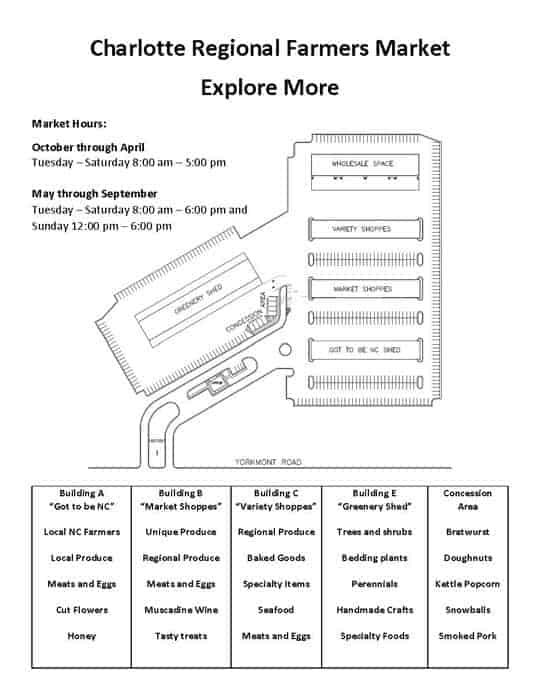
What to buy
Whether you’re just browsing or building your weekly menu, here are some of our favorite things to grab:
Seasonal Produce: the variety changes every month, which is half the fun. A lot of the produce is grown within a few hours of Charlotte, and vendors love to tell you what’s freshest or how to cook it. In spring and summer, expect to see:
- Strawberries
- Zucchini, cucumbers, squash
- Tomatoes in every shape and color
- Ripe peaches and blueberries
- Green beans, corn, okra, and more greens
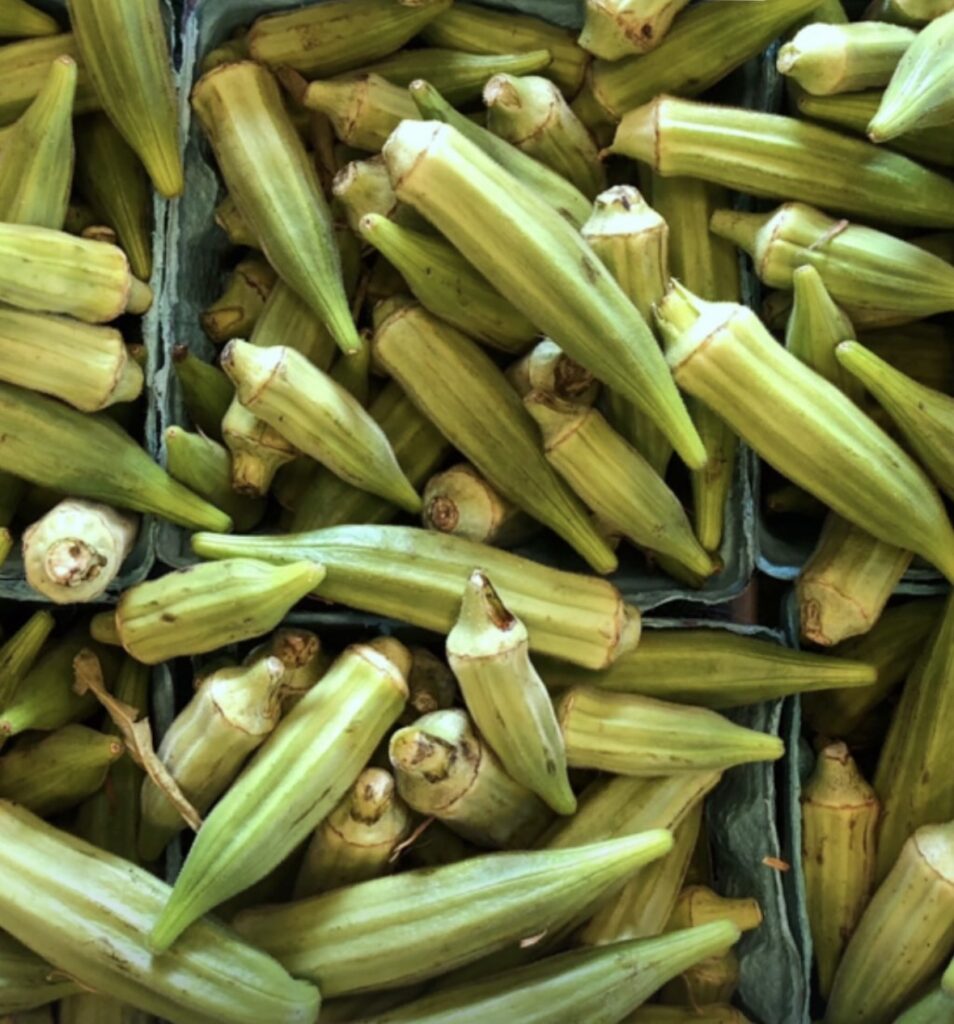
Baked Goods: if carbs are your love language (same), you can find:
-
- Giant cinnamon rolls
- Buttermilk biscuits
- Local sourdoughs and artisan loaves
- Hand pies, sweet potato donuts, muffins… basically, don’t come hungry unless you want to buy one of everything.
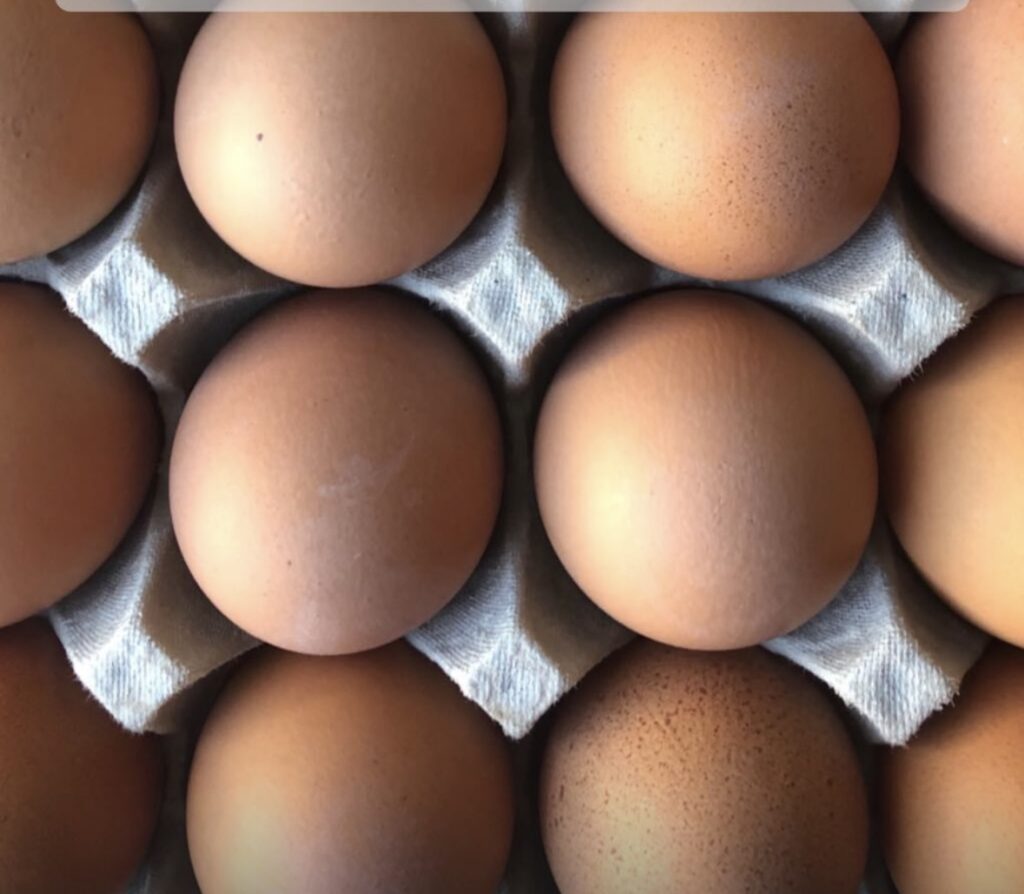
Local Meats, Eggs, and Cheese: You’ll find grass-fed beef, pasture-raised chicken, fresh pork products, and even bison. Many vendors offer pre-packed cuts ready to toss on the grill or into the slow cooker. Also look for farm fresh eggs and local cheese (including cow’s milk and goat milk cheese).
You can also stock up on pantry staples and extras at the farmers market like:
-
- Local honey
- Delectable jams, pickles, hot sauces, and spice blends
- Fresh pasta, homemade salsa, and barbecue sauce
- North Carolina peanuts and nut butters
Flowers and Plants: Pick up a fresh cut bouquet of flowers, herbs, plants, and even local trees and shrubs (we have been debating a paw paw tree purchase for years).
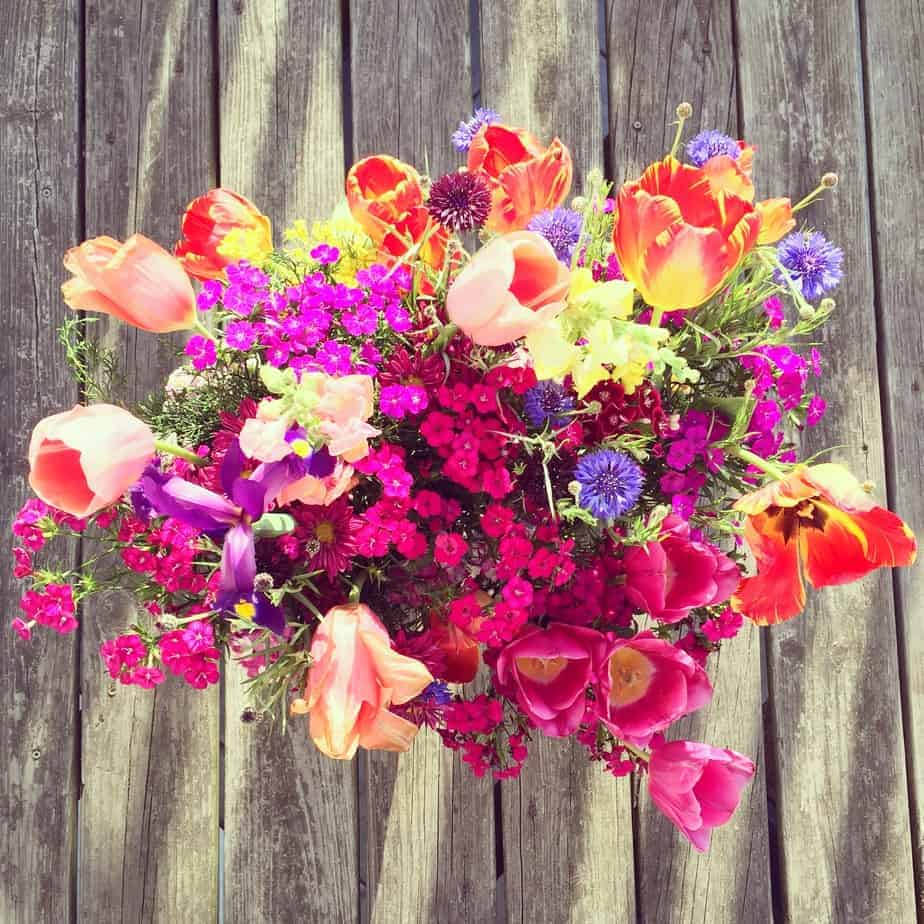
Pro Tip: Ask Questions!
Vendors love sharing recipes, storage tips, and their backstory. It turns grocery shopping into a little local adventure. We love chatting with the vendors we see week after week.
How to know what is local
I got this question a lot on social media, so I wanted to make sure I answered it clearly in this post.
I feel like I already sort of answered it…but here we go. In order to know that you are buying something truly local grown by a local farmer, you need to ask the person selling it to you.
I could say, simply stick to Building A, but I don’t think that would be good advice or would do the market justice…while there are the highest concentration of local North Carolina farmers in Building A, there are also local farmers spread out in the market in Buildings B and C, and you wouldn’t want to miss them by just staying in Building A.
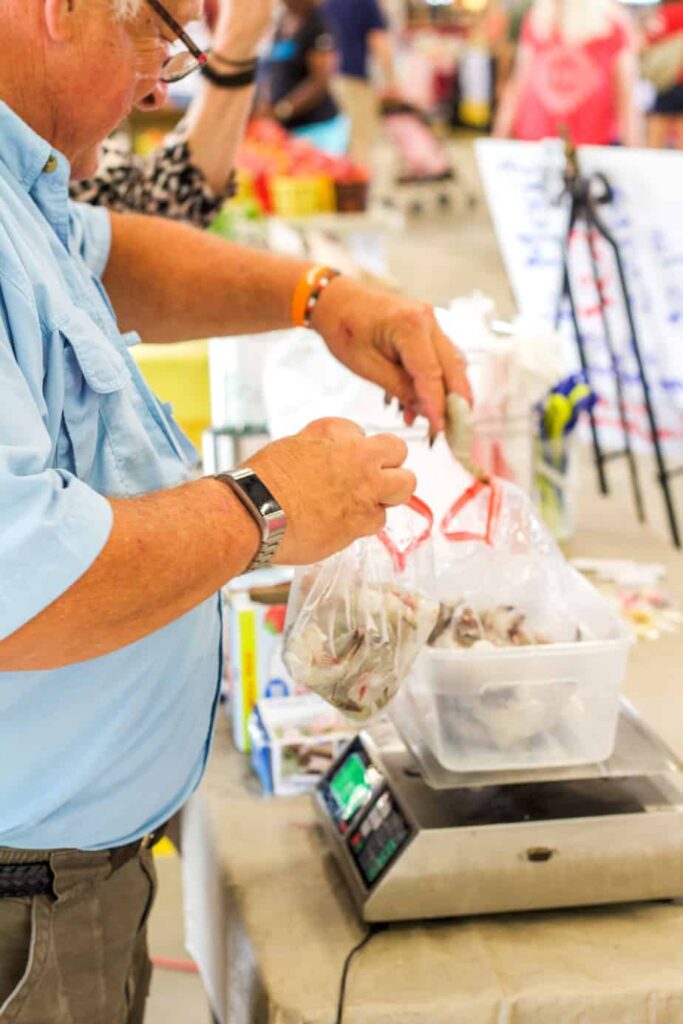
Wander around. Look at the produce. Think about the growing seasons (there is a seasonal growing chart on the market website which will tell you what fruits and veggies are in season and when they are in season).
And most importantly, talk to the vendors!
We have loved chatting with and getting to know the people who grow and raise our food. It’s one of our favorite parts!
Tips for Visiting with Kids
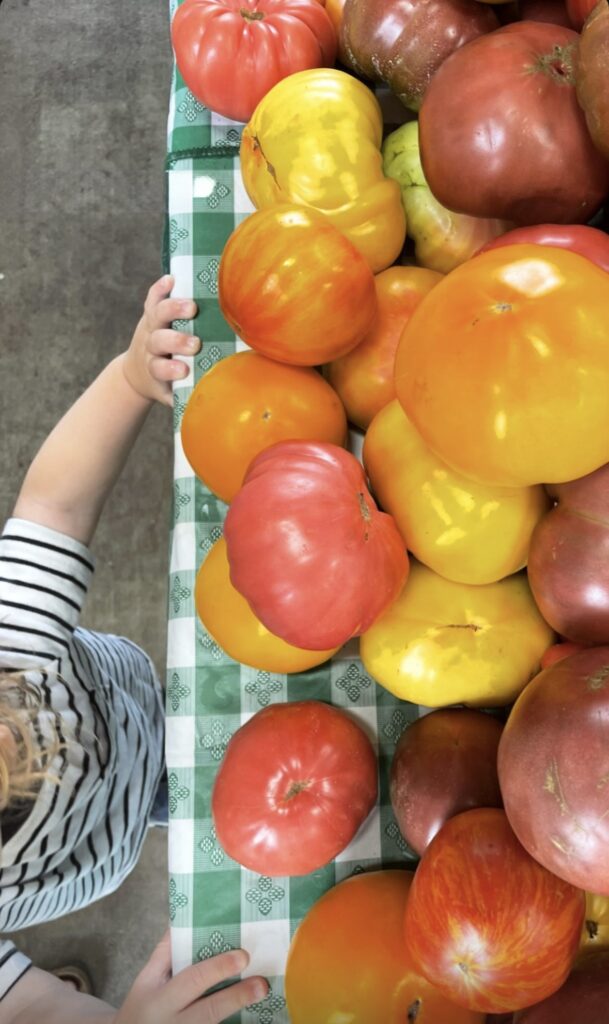
Let’s be honest—taking young kids anywhere requires planning, snacks, and the mental stamina of a triathlete. But a trip to the Charlotte Regional Farmers Market can actually be enjoyable (even relaxing?!), if you know a few key things ahead of time. Here’s what’s worked for us:
Go Early. The market is open Tuesday through Saturday, but Saturday is the big day, especially for families. Try to arrive between 8:00 and 10:00 AM for the best selection and fewer crowds. By 11:00, the parking lot starts to fill, and a lot of things are sold out.
Parking Is Free and Plentiful. There’s a big parking lot right in front of the sheds, and it’s free. On busy Saturdays, you may have to park a little further out and walk, so I always bring the stroller, even if the 3-year-old swears he wants to “walk like a big kid.” We see a lot of families at the market with wagons too. A small cooler bag or insulated tote is great too if you’re buying dairy, eggs, or meats.
There are public restrooms near Building A (the main one) and again by Building D. They’re clean-ish and functional, but only some have changing tables. I’ve done more than one emergency diaper change in the trunk of the car.
Let the Kids Pick Something. One of my favorite ways to keep my kids engaged is letting them each choose something: a fruit, a veggie, a flower, or a baked good the size of their heads. It keeps them involved, and they’re way more likely to eat something they “picked all by themselves.”
Bring Cash and Card. Most vendors take cards these days, but a few are still cash-only, especially for smaller purchases. I usually bring a little cash for quicker transactions.
Bring sunscreen for hot summer days. While all the buildings are shaded, the parking areas are not, and you will be walking between the buildings as you’re doing your shopping.
Also the farmers market hosts a variety of free events and festivals, including the annual Harvest Festival in the fall, featuring the pumpkin sling, apple cider and muscadine wine samples, and a visit and photo op with cute piglets.
Is it pet friendly?
While dogs are allowed on the property, they are not allowed in any of the selling areas of the market, which means you can’t bring your furry friend along on your farmers market shopping trip.
Service animals are allowed in the selling areas of the Charlotte Regional Farmers Market.

